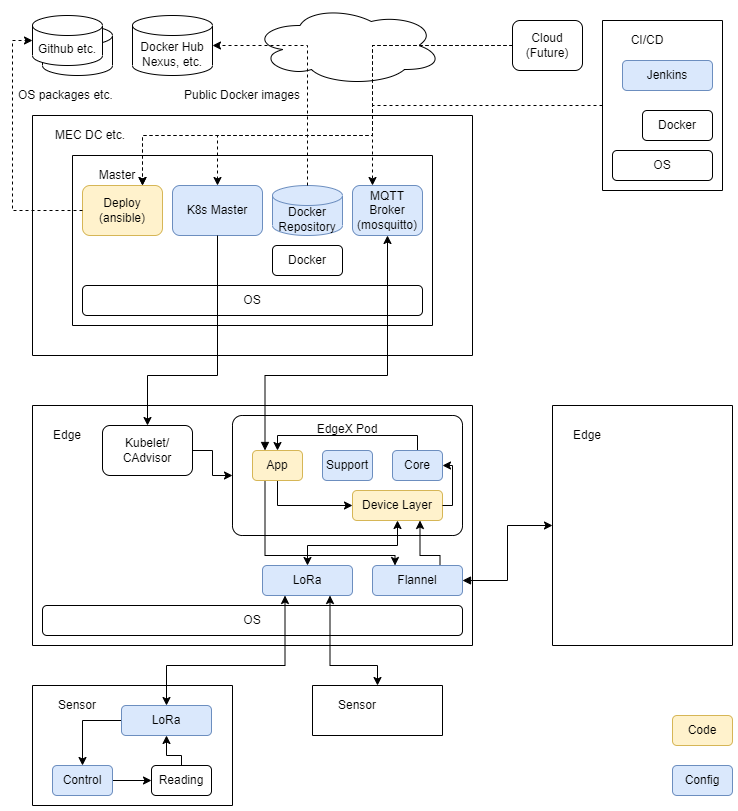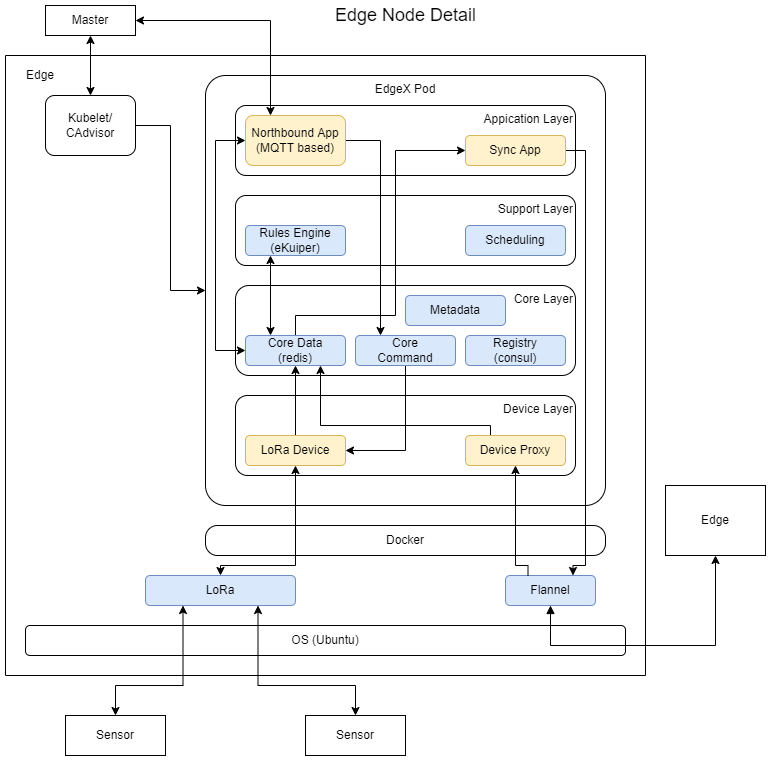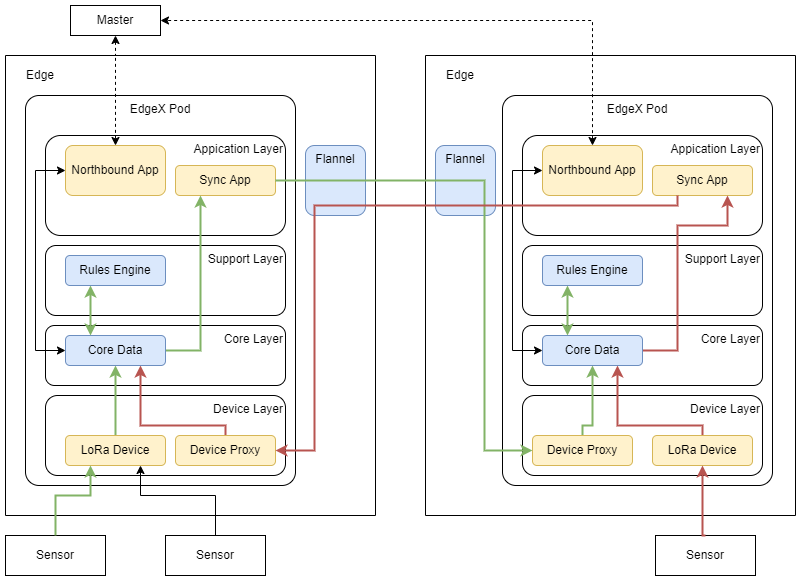...
Cyber-physical systems (CPS), which combine sensor networks with computing to monitor and control the physical environment are becoming more popular each day. The bandwidth of the sensor network depends on use cases. Large amounts of data from large numbers of sensor nodes will put pressure on the available network bandwidth between the edge and the cloud. Therefore, we need to have a means to optimize bandwidth utilization according to use cases. This blueprint propose a solution for network bandwidth optimization through data sharing at the edge, also enabling a more responsive and smarter total system.
Overall Architecture
<This could inform the non-technical audience, but now is more geared towards a more engaged, technical audience>
< Blue print's relation to Akraino generic architecture, how it relates to it >
The diagram below shows the overall architecture of this blueprint. The colored components represent customizations or new implementations added for this blueprint. The details of the edge node and inter-edge data sharing are further illustrated below.
The Smart Data Transaction for CPS blueprint consists of the following types of node roles.
- CI/CD: Runs Jenkins to pull source and scripts, build components and run tests.
- Deploy: Runs scripts (mainly Ansible playbooks) to install components on master and edge nodes.
- Master: Runs the Kubernetes controller for orchestrating the edge nodes, a local docker registry providing container images for the edge nodes, and mosquitto (MQTT broker) for collecting data from edge nodes and sending commands to them.
- Edge: Collects sensor data, performs edge processing, and forwards data to the MQTT broker on the master node.
- Sensor: May be a smart sensor or a device containing sensor hardware and a communications device (e.g. LoRa) so that sensing data can be collected remotely by the edge nodes.
Some of the node roles can be combined on a single piece of hardware. For example, the "deploy" and "master" nodes can be the same server in practice.
The diagram below shows the details of the edge node. The edge node runs an instance of the EdgeX Foundry microservices stack. The EdgeX Foundry stack is instantiated on multiple edge nodes using Kubernetes from the master node.
The new LoRa device service can provide low-power radio connectivity to remote sensor nodes from the edge nodes. The device proxy service and synchronization application allow edge nodes to share data.
The diagram below illustrates the architecture for data sharing between two edge nodes. (The green and red lines show flows of data originating on the left and right nodes respectively.)
< This section will use the Akraino architecture document as reference>
Platform Architecture
<Hardware components should be specified with model numbers, part numbers etc>
...


